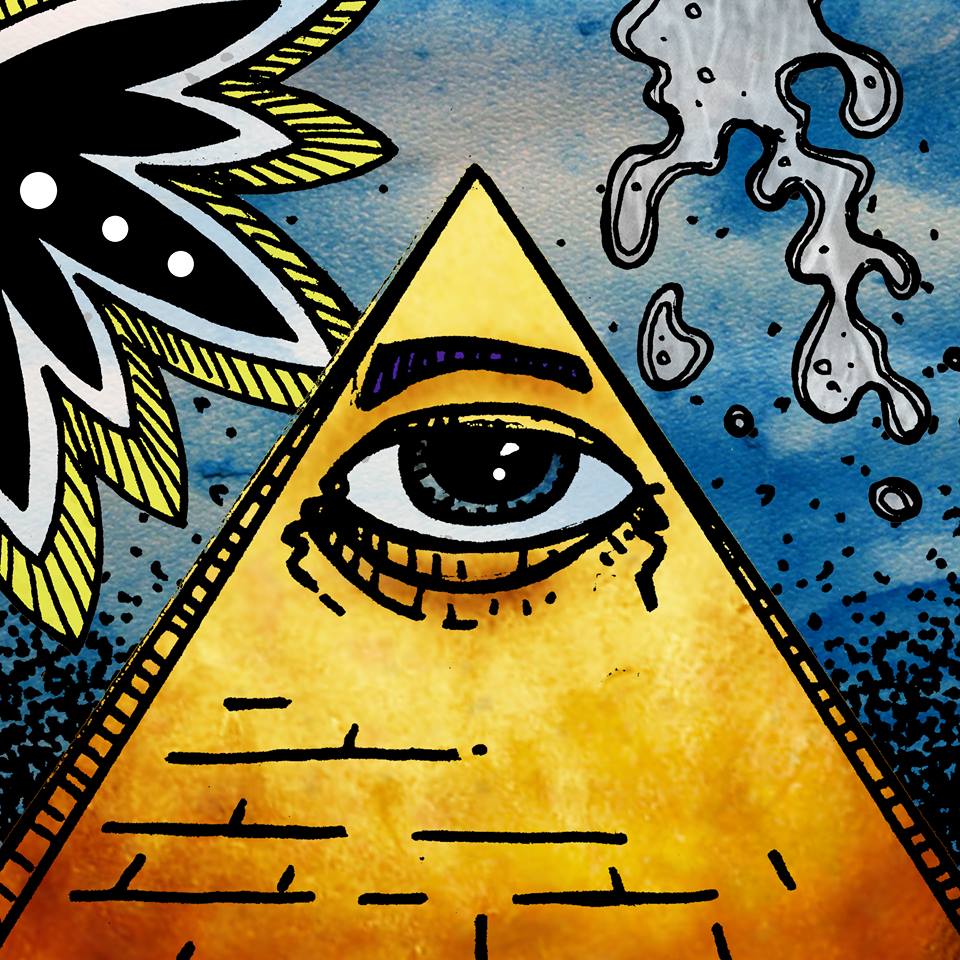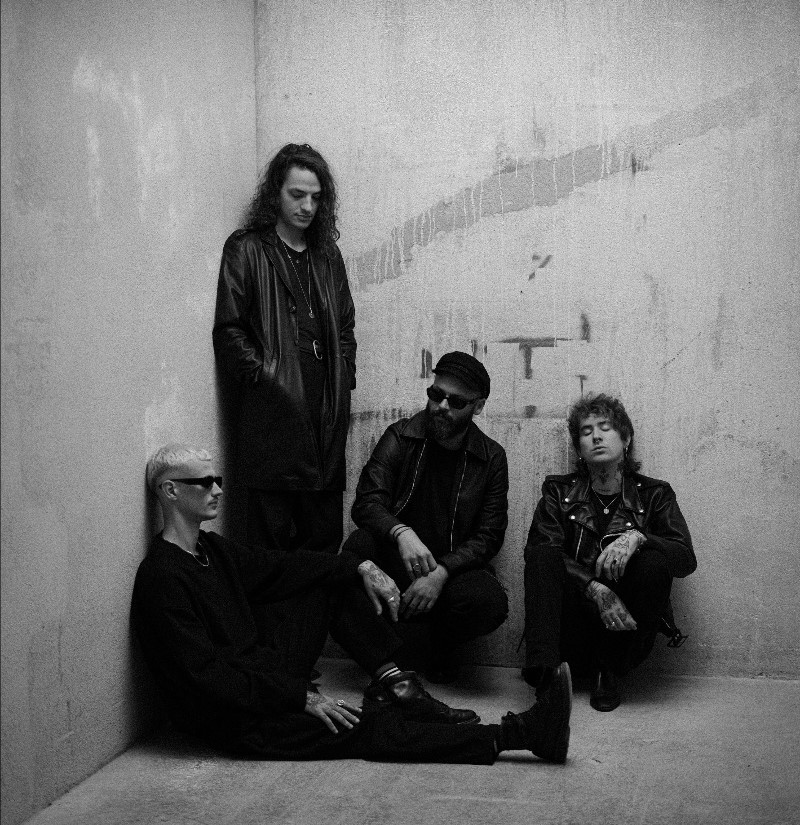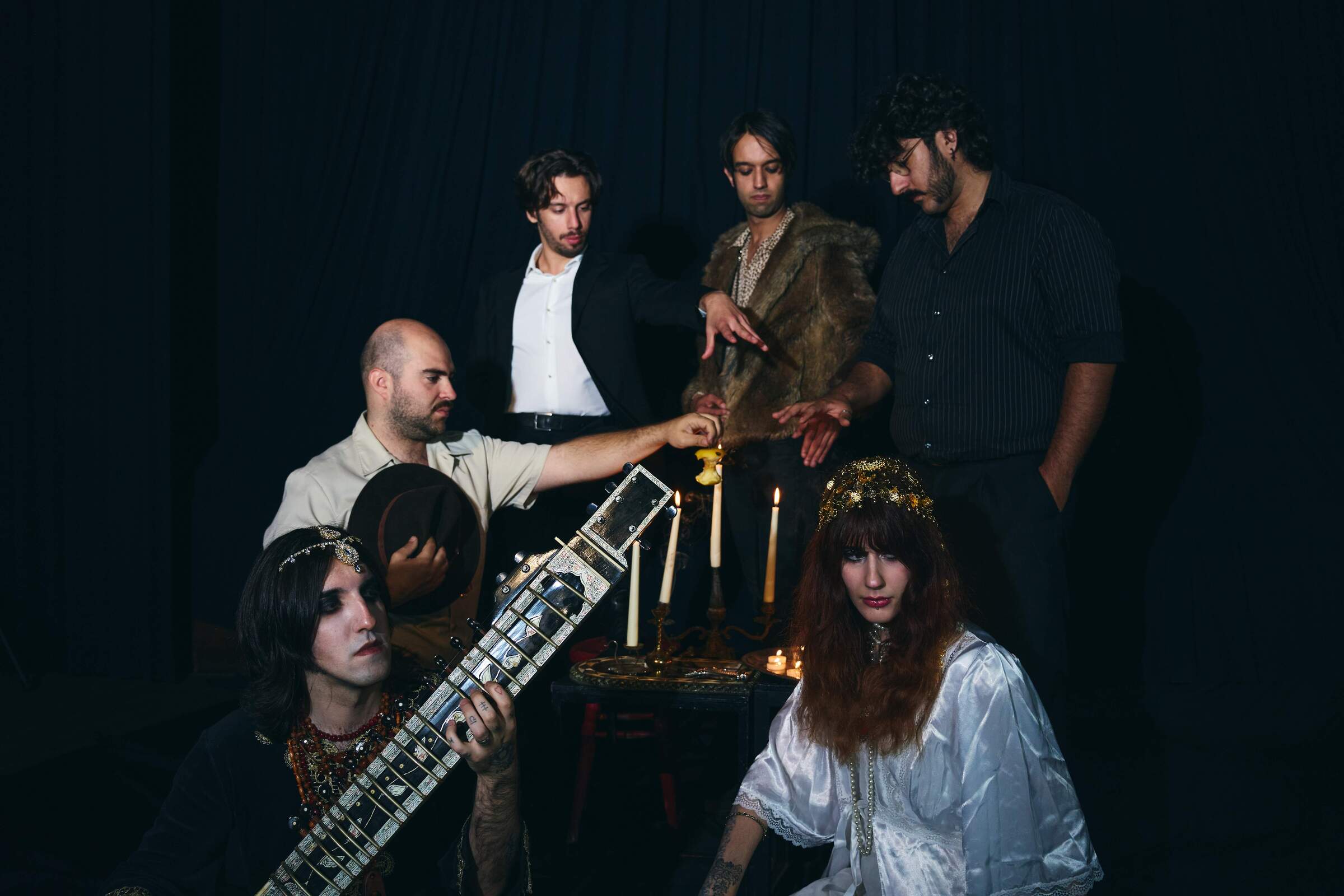Dissipated Face | Interview | “Fearless in exploring the better parts of free music”
‘Live at CBGB 1986’ is a long-buried document finally seeing daylight. Roaratorio Records unleashes these previously unheard recordings from the legendary NYC venue, capturing Dissipated Face at their most volatile.
A collision of hardcore punk’s brute force and free jazz’s chaotic spirit, it’s a set that still crackles with unfiltered energy.
Captured in 1986 at CBGB, this isn’t tidy history. It’s alive, messy, and immediate. Carter would go on to become a mainstay of New York’s free music scene. Ralske later made waves with Ultra Vivid Scene. But in this moment, they’re locked in a raw, terrifying energy field.
With cover art by Raymond Pettibon, this release finally gives shape to a sound that was too unruly to belong anywhere. Now it does.
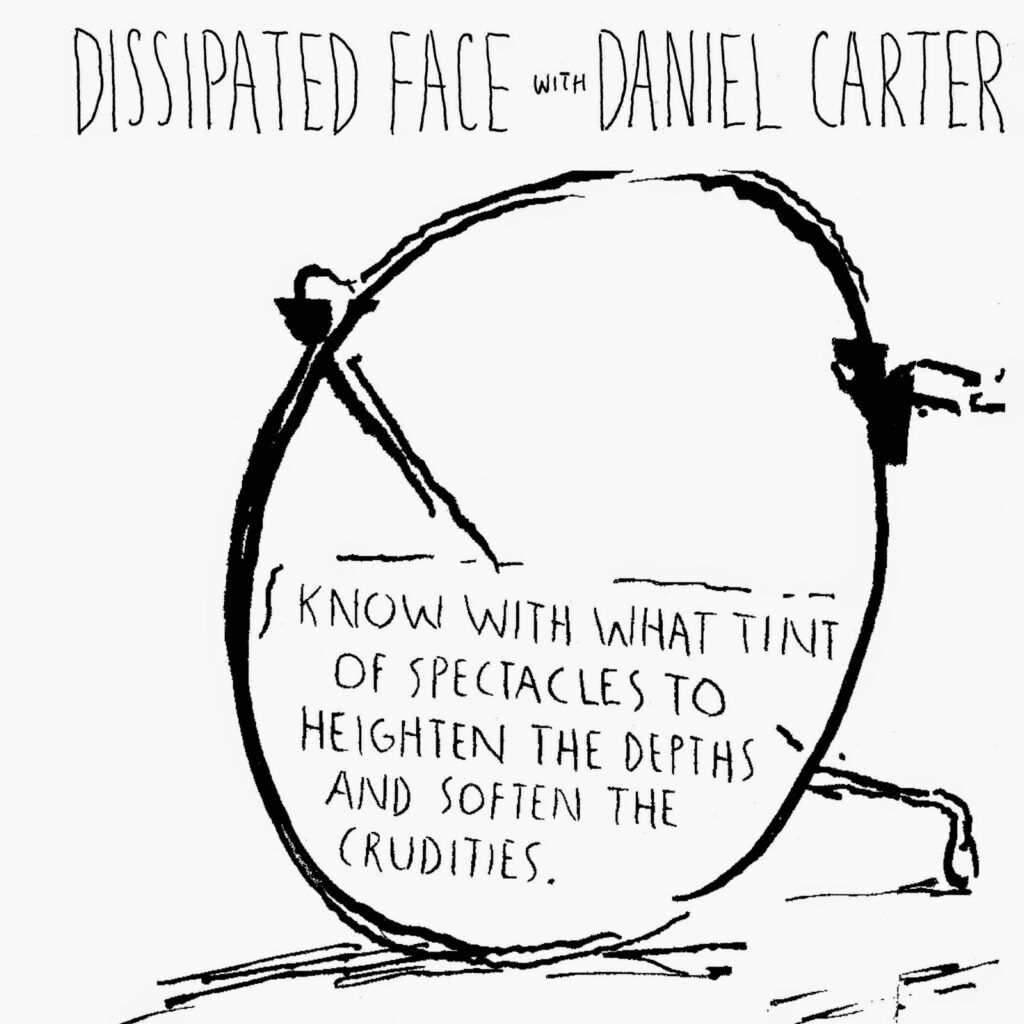
“I call it hardcore punk UFO music”
Thanks for taking the time to chat about your 1986 recording and the beginnings of Dissipated Face. Before we get into how the band came together, where are you from, and what kind of stuff influenced you growing up—both as a kid and later as a teenager?
Stephen Popkin: I was born in Brooklyn, NY, in 1964 and grew up listening to Doo Wop, Brill Building songs, and Folk music as a kid. That led me to discover Bob Dylan and the Beatles by the mid-70s. Things really began to change when I moved to Merrick, Long Island, New York, at age 12 and started studying drums seriously—first at the Long Island Drum Center and later with Chet Doboe, an influential local drum teacher who wrote many instructional books.
I became a fan of the Sex Pistols in 1977 after seeing them win a People’s Choice award on TV for the most disgusting band or something like that, presented by Ed Asner. I had already heard The Ramones, The Clash, and Talking Heads via Eddie Morman Young, who, like The Ramones, came from Queens. I met him at a summer camp in 1978 called Camp Swago. His sister and his bandmate Keith’s brother were a couple of juvenile delinquents who traveled in the punk rock circles of the day and were really into those bands—and it rubbed off on us.
Kurt Ralske: My dad was a semi-pro jazz musician when he was young. I grew up hearing 1950s jazz and classical music. In my early teens, I worked hard at playing jazz on the trumpet, inspired by 60s and 70s Miles Davis. Then, when the teen years really kicked in (anyone remember “acting out”?), I switched from trumpet to guitar. Why? It was simply an easier instrument to play after you’ve smoked too much weed.
Stephen: When I met Kurt, I had just turned 17, and he played me two records I had never heard before: Miles Davis ‘Bitches Brew’ and Henry Cow with Fred Frith, and that really opened my ears to new sounds like Ornette Coleman, Thelonious Monk, Sun Ra, Bill Laswell, and John Zorn. We saw them many times along with DNA, Bad Brains, Talking Heads, Fred Frith, McCoy Tyner, and Elvin Jones with our friend Bruce Gallanter. I saw Miles Davis and Sun Ra over 10 times each—who were my favorite living jazz musicians at the time—as well as The Clash and The Ramones whenever possible.
Kurt: I listened endlessly to Jimi Hendrix ‘Band of Gypsies,’ John McLaughlin/Mahavishnu Orchestra ‘Between Nothingness and Eternity,’ and King Crimson USA. (These three still sound pretty good to me, even now.)
Were you involved in any other bands or music projects before Dissipated Face came together?
Stephen: I met a very talented piano and Moog player in grade school, in an experimental music class for gifted students. He had gone to the Mannes School of Music, which was sort of like a feeder school for Juilliard. We formed Data 5 with Tommy Williams (The Hooters, Debbie Gibson, and Mazarin) on guitar and singer Paul “Doc” Docteroff in 1976. Later, I started Innovation, again with Docteroff. From grade school throughout early high school, we played in basements and garages, at parties, and in battle of the bands. Then, I formed Thunderfux with another guitarist and a variety of bass players after we reunited in high school and wanted to start a punk rock band, before we had met Kurt.
Kurt: Before Dissipated Face, I didn’t play in any formal groups. But every weekend, I would go to Manhattan and play in free jazz jam sessions with musicians like Tom Bruno (drums), Steve Buchanan (sax), Lefferts Brown (electronics), and Ellen Christie (voice). I learned so much from these musicians. They were supportive of what I was trying to do, even though I was just a little high school punk from Long Island.
How did Dissipated Face come together? And what’s the story behind the name—why Dissipated Face?
Stephen: He showed up at John F. Kennedy High School in Merrick/Bellmore one day because he got kicked out of a private school. It was controversial because my mother had shown me an article about it in the New York Daily News, and then, like a week later, there he was at JFK HS. He said, “Popkin, let’s start a punk rock band. I’ll play guitar.” I had only known him as a piano player, but I knew he was really talented. Also, I had a sheet music book called The Punk Rock Songbook, so I said, “OK, I’m in.”
Kurt: I switched to a new high school in 10th grade. Because I didn’t know anyone, I would sit in the back of the cafeteria by myself and practice whipping out on my electric guitar. Of course, this was a total insecure poser thing to do. But it worked! Steve approached me and roped me into jamming. And thus, a Face was born.
Stephen: We had taken to making fun of rock stars, calling them dissipated, because they were getting so old and decrepit, especially Rolling Stones Mick Jagger and Keith Richards (shades of The Clash song 1977 which stated “No Elvis, Beatles, or The Rolling Stones”). One day we saw a picture of Jagger in the Soho News, and we said he had a dissipated face, and the name just stuck. We started calling him “Face.”
Around the same time, we started seeing this guy who we found out was Kurt Ralske, practicing his electric guitar without an amp in the school lunchroom every day. I had recognized him as a trumpet player in the HS band where I played drums and percussion, although he wasn’t always in class, and I thought he was the flute player’s brother or something. Since we were looking for another player to complete our punk rock band, we approached Kurt to join, and when he said yes, we switched from guitar to bass.
Kurt: The three of us were a funny mix of music styles and personalities. Steve had the punk-est taste in music, I was totally “outside.” I loved Pere Ubu, Public Image Ltd, Gang of Four Entertainment!, but I really couldn’t relate to, say, The Clash or The Ramones, which was closer to Steve’s bag at the time.
Stephen: But before we formed Dissipated Face, we started The Good Humor Men, which was a Progressive Rock proto-Dissipated Face band that sounded like Eno meets Ash Ra Temple and Miles Davis’ ‘Bitches Brew,’ mixed with ‘Jack Johnson,’ with Kurt and Mitch Hiller on keys and percussion, and Ron Vos on drums. I mainly played Kurt’s Moog and sang through an echo chamber like Robert Wyatt. Then Ron and Mitch dropped out because they couldn’t rehearse every day.
Kurt: And that was how I played. I could play weird modal chord voicings I’d copped from McCoy Tyner on Coltrane’s ‘A Love Supreme,’ but I didn’t know how to play even the most basic punk barre chord. Totally backasswards…but this is part of what made Dissipated Face a great group. We had no idea how it was “supposed” to be done; we just had fun exploring how we might best fit together.
Stephen: So then, in September 1981, we became the original Dissipated Face, a somewhat angry and political, progressive power punk trio with Kurt Ralske on guitar, “Face” on bass and vocals, and myself, Stephen “Steve X Dream” Popkin, on drums and vocals.
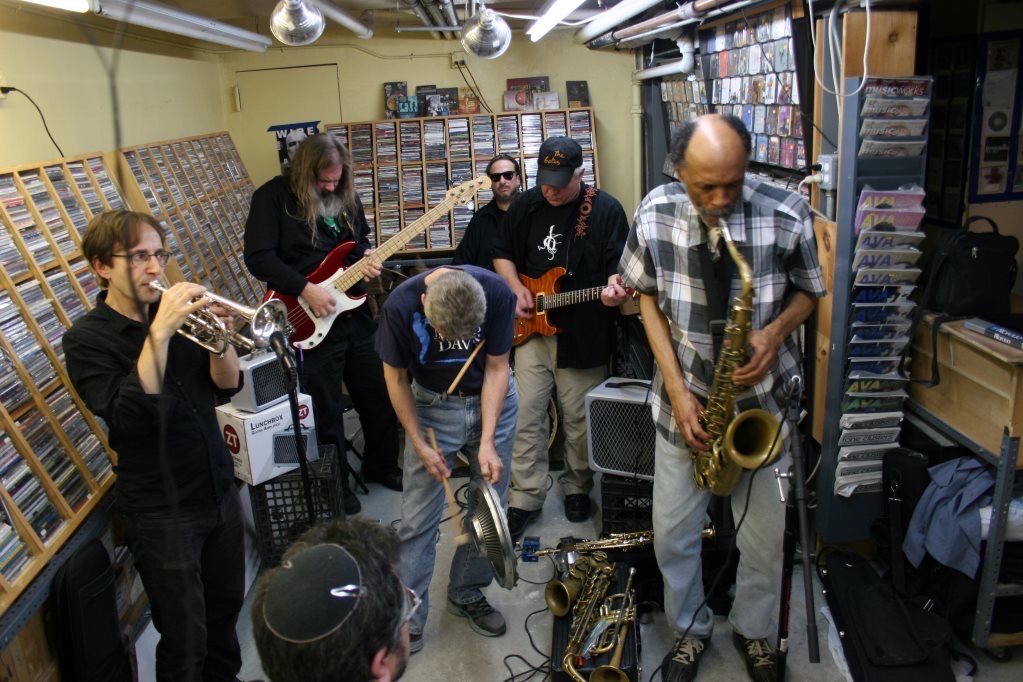
Bruce, can you tell us how you first met the other members of Dissipated Face and how you got involved with the band?
Bruce Lee Gallanter: I first met Kurt Ralske online at a Fred Frith concert at Squat Theatre around 1981. We talked about Frith’s unique approach to the guitar and his previous band, Henry Cow. We became good friends soon thereafter. I was then living at home in Linden, NJ, with my family and had jam sessions whenever my parents went on vacations, a few times per year. Kurt played guitar, so I invited him to some of these sessions, and he jammed with several jazz/rock musician friends of mine.
Kurt was in high school at that time in Merrick, Long Island, NY, and formed a trio with Stephen Popkin, soon called Dissipated Face. Dissipated Face also came to my house around that time and played for friends of mine, some of whom were knocked out by their unique sound, a blend of punk/psych/reggae/prog influences.
We all became friends, and the three members became part of my extended local family of musicians, always eager to jam and play gigs. I taped as many concerts and jams as possible, since for me, all gigs & jams were important to document. I became a sort of manager for Dissipated Face since they were eager to play live as much as possible. They ended up on bills with Borbetomagus, Phantom Tollbooth, Shockabilly, Scornflakes, Machine Gun, and many other bands who were in between categories. We all attended as many gigs together of all types of creative music as possible – free jazz, noise, punk, Downtown, etc.
You started playing as a trio in 1981. Where did you perform before those legendary shows at CBGB?
Stephen: We rehearsed every day after school. We saw the music business first hand and took the idea of being a band very seriously. The first gig we played was a party when I set up a venue, “The 11:59 Club,” in my basement with our roadie Wayne Kropp, on November 13, 1981. Then our first proper gig was at CBGB on November 30th, 1981. We were passed at the audition night by Hilly Crystal, the owner of CBGB (who was recently the subject of a motion picture), and then we were invited back many times throughout 1981-1986, opening for The Meat Puppets, Cheetah Chrome (from The Dead Boys), The Anti-Nowhere League, Plan 9 (a psychedelic band from New England), and many local bands like The Tapes and The Nightcaps.
Kurt: It was very exciting for us three little high school kids to play gigs at CBGB’s and other clubs in Manhattan and New Jersey. These new and strange experiences made suburban life feel tolerable. We were still losers, as far as the rest of the high school was concerned… but we knew we were superheroes because we were playing a Tuesday night at CBGB’s!
Stephen: We booked and played any gig we could, at bars and clubs in Manhattan, Long Island, and New Jersey, often with Bruce’s help. Places we played included Inroads (a large loft located at 150 Mercer Street), The Coventry (where both the New York Dolls and KISS started), The Underground (with Iggy Pop and Chris Spedding for a Dada party hosted by New York nightclub legend Fred Rothbell Mista, who later ran The Limelight), My Father’s Place (where I accused owner Eppy of shorting our pay), Arrows, The Dive, Dr. B’s, The Jetty, and others. Many school nights, we would drive into the city to play a show and return home, sneaking into bed at 4 a.m. without our parents realizing it, somehow (?)
What’s the story behind Daniel Carter joining the band, and how did you come up with the idea to blend punk music with avant-garde jazz?
Stephen: All three of us lived in Manhattan after 1984, and we used to rehearse at a place called Vital Music in the East Village on East 10th Street, near Tompkins Square Park, run by Dan Hoyt (from an industrial synth band called Lysdexic. He would later get arrested in 2002 as NYC’s serial subway masturbator). A lot of the local hardcore bands would rehearse there. My recollection is that’s where we met Daniel Carter. He was sitting in with another band, and we heard him and asked him to jam with us, and he said yes. We were always experimenting with new sounds and players, and since we were a trio, we had room for a guest player. Daniel played all sorts of reeds and horns, like saxes and trumpets, which was unusual. Only Ornette Coleman played saxophone and trumpet to my knowledge, because each instrument takes different unique lip movements that are hard to master, so we knew he was a special musician. He also played the flute and clarinet. He only played free jazz improvisation, so we could just play loud and fast, and he would play on top of us as well as with us.
Kurt: The funny thing about playing with Daniel in the 1980s is that I have absolutely no recollection of ever talking to him. There was no chit-chat about the songs or what time soundcheck was. He would just appear onstage, and everything that came out of his horn was magic.
Bruce: Daniel Carter was and still is one of the only creative improvisers who sought out like-minded musicians from whatever background they came from to play with. He heard something special in Dissipated Face, and they became kindred spirits, combining punk, jazz, funk, and noise into their own sound and songs. From the early ‘80s, when No Wave, early punk, Downtown, and soon hardcore punk emerged, musicians from diverse backgrounds experimented across diverse borders and came up with new forms of music not held by categorization.
Kurt: I’ve come to appreciate that Daniel is not only an incredible musician, but he is also a champion talker. Conversations with Daniel range wide and free and deep, like his music. Ideas spin and collide, language flows in expected torrents, focus zooms from micro to macro. You talk, you listen, you think, you learn. Every minute spent with Daniel is, for me, an education.
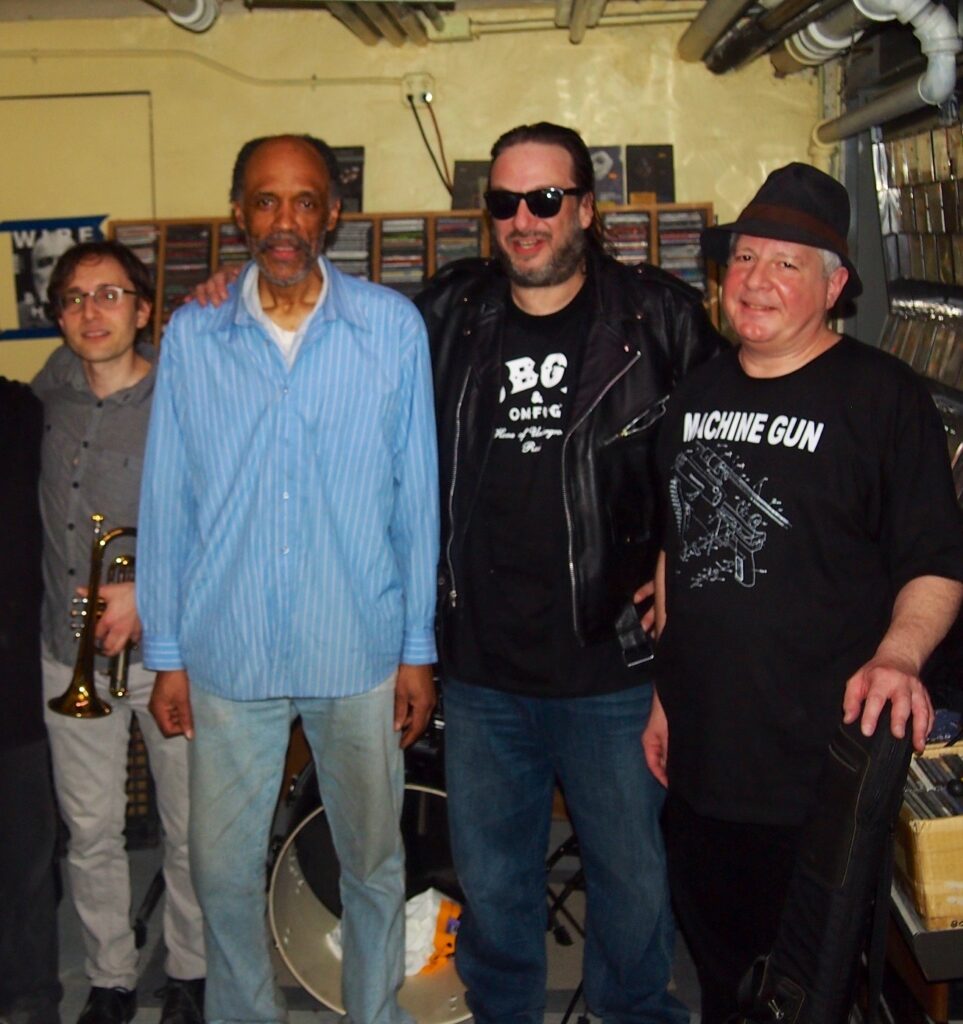
“Dissipated Face were amazing in their day and were fearless in exploring the better parts of free music.”
What pulled you into the hardcore punk scene in the East Village during the 80s, and what were your impressions of the bands you played with?
Daniel: I call it hardcore punk UFO music because of the way it can turn on a dime, rhythmically, harmonically, melodically, mood-wise, atmosphere-wise. The emergence of hardcore punk was a breakthrough in 20th-century music. There was an increased collectivity in the creation of the music. It was politically radical, whether for good or ill (I think it was mostly for the good, though it was serious as a heart attack, think kamikaze). It’s a kind of rap music, but it never, to this day, has made it into the mainstream, as hip-hop definitely has.
When I first heard hardcore, I said to myself, “Wow, everything I got from Ornette, Coltrane, Miles, Cecil Taylor, and Albert Ayler, (plus doo-wop, soul, funk, disco, hip-hop, R&B, and classical, and world music, in other words, all the music I ever loved), I can now apply to hardcore punk.” Hardcore, along with all the above-mentioned genres, still to this day inspires me to aspire to get to the point where I’m playing in a group that does it all, in a cosmic synthesis, brought to earth.
Stephen: At that time, in 1984-1986, I was really getting into the SST Records bands like Black Flag, Hüsker Dü, The Minutemen, and the Meat Puppets (who we got to open for), and we wrote several songs in this new hardcore style like ‘My Life Is Like An Alligator,’ ‘Falling Downstairs,’ ‘Thank God I’m Not A Red’ (based on my experiences as a college student at Boston University as a student radical influenced by Abbie Hoffman and the Yippies), and ‘Slit Wrists’/’Cut Heart’ (about the Queens Boro President Donald Manes who violently attempted, then committed suicide because he got caught being a corrupt politician), which is a bonus track on the Roaratorio EP. We also revived several older songs like ‘Reagan is a Nazi,’ ‘Rock is Dead,’ ‘Shithead,’ ‘Streets of New York,’ and others with these new arrangements, and Daniel kept right with us!
Robert “Bob” Musso: I remember the downtown music scene when I moved into NYC in 1980. There was Rock, Punk, Jazz, Free Jazz, Loft Jazz, Blues, Country, Folk, Noise, experimentation, and all sorts of art and improvisation being mixed together in every way imaginable. I’d go to a club and see the Ramones, and then Don Cherry would play afterward while someone was painting on the same stage! That time really opened my mind as to the notion that anything was possible.
It influenced me to call some of my old Rutgers friends from New Jersey a few years later and start my band, Machine Gun (based on the FMP record by Peter Brotzmann). Our first gig was at the Pyramid Club when we were first called Sounds of the Apocalypse. Halfway through the set, male dancers started undressing and dancing on the bar. I met Steve and started playing with them around the same time and was really impressed by how tight they were playing together. Steve would play drums and percussion, and we’d get together whenever possible. A few years later, Steve and Bruce would help me start my record company, MuWorks Records. I’m still in touch with all of them and try to play with them whenever possible.
Didn’t you also play with Harley and his Cro-Mags projects?
Daniel: No, I never played with Harley back then, in the ’80s, though I wish I had.
But I met up with him years later in a rehearsal studio in the Music Building on 8th Ave., and we had a long, cool conversation about the old days and the intervening years.
So, what happened next? How did it all come to an end?
Bruce: Dissipated Face broke up in the late eighties, with all three members moving on to other creative endeavors. Although all of us have been involved in a variety of other activities, we have remained friends and still jam on occasion, especially the annual Yule Log Christmas jam that we all look forward to participating in.
Stephen: After Kurt left Dissipated Face, we played in projects with Daniel Carter, Robert Quine, Bern Nix, Robert Musso, Bill Milkowski, Ted Goldberg, and even Juma Sultan, who was in Jimi Hendrix’s Woodstock Band. We went under the name Dissipated Improv Orchestra for most of these gigs, playing CBGB, the original Knitting Factory on Houston Street, and The Village Gate.
Kurt joined Nothing but Happiness and The Crash in the East Village and then recorded his first Ultra Vivid Scene single, a solo 7-inch independent release that he took to England, where it was heard by Ivo Watts-Russell, who signed him to an album deal with 4AD, which was distributed by Columbia Records in the USA. He then returned and recorded the first Ultra Vivid Scene solo at a studio in NYC without our involvement.
Roaratorio Records did a great job releasing your live recording. How did you get in touch with them?
Stephen: James Lindbloom of Roaratorio Records was trying to put together a Daniel Carter ‘The Punk Years’ compilation. Daniel had played with many bands in the nascent hardcore scene in the 80s, including Bruce Loose of Flipper, along with Suzanne Miller, and members of the Cro-Mags and countless others.
Daniel: I never actually played with the Cro-Mags, but I did play with their drummer, Mackie Jayson (also in Bad Brains), in some jam sessions, and also, in a show, with a group he played in called Frontline. The band’s lineup was comprised of Mackie on drums, Noah Evans on bass, and Miles Kelly on guitar.
Stephen: James was trying to acquire tapes of these recordings to put together some sort of jazz hardcore punk compilation. I heard about this on a Sun Ra mailing list around 2003 and contacted him there. The problem was I had to find the tapes in my archives. Fast forward to 2010 or 2011, and I finally found two tapes we made with Daniel Carter. One was the Dissipated Face and Daniel Carter live at CBGB 1986 soundboard tape, where Daniel had played the whole concert with us, after jamming regularly together for a couple of months. It was for a WNYU-FM (New York University) CBGB show with Ritual Tension and the Honeymoon Killers, organized by DJ Bernard Tubina aka Bernie Bash, of the Fun radio show. We had done an on-air interview at WNYU-FM before the concert. The entire bill also played on WKCR-FM (Columbia University) the week before on Ted Goldberg’s (who was a college radio DJ and also ran Inroads) radio show Transfigured Night.
James Lindbloom: The record grew out of a larger project that I attempted to undertake 10 years earlier. Daniel Carter (with whom I’d worked on the Music Ensemble album) had mentioned, in a couple of interviews, his time spent playing with various punk and hardcore bands in NYC during the 1980s. He gave me a list of all the musicians and bands he could recall gigging with (including members of Flipper, Frightwig, The Cro-Mags, etc.), and I started tracking down everyone I could. Stephen Popkin was one of the first to respond, with a tape of his band Dissipated Face at CBGB in 1986. My original plan was to make it a compilation record of Daniel’s work with several different groups, but it turned out that, more often than not, no one was rolling tape back then. After a few more years of chasing down all the leads I had, I decided to release the Dissipated Face material on its own as an EP.
Stephen: Once I found the tape all those years later, I contacted James, and he told me that it was the only tape of Daniel’s punk years that he was able to obtain, and he wanted to release the fastest and most hardcore sounding songs from the tape on an EP. His label specializes in avant-garde and free jazz on vinyl-only releases, which impressed us. Also, all his releases feature special packaging or unique pressings, so the idea of a 33 1/3 – 5-song EP fit in with his label’s unusual type of pressings. He was able to get Raymond Pettibon, who’s known for his comic-like drawings with ironic or ambiguous text, to do artwork for this release, which is really special and means a lot to me and Kurt. Pettibon is a contemporary artist who started out doing the “bars logo” for Black Flag, and SST Records LP cover art and flyers. He later did Sonic Youth’s Goo, as well as covers for The Minutemen, Foo Fighters, and many others, and he’s been featured in many museums and galleries since then. He recently had a display of baseball-themed billboards on the High Line elevated park in New York City.
James: I selected one from a small-press monograph of his, asked him for permission to use it, and he consented.
Are you still active as a musician?
Stephen: I’m a DJ professionally and still a drummer with the reformed Dissipated Face with Daniel Carter. I also like to organize and play at jam sessions whenever possible. I love playing the drums, and I feel that each and every time I hit a drum, it makes me a better player and a better person. I’m also an advocate for the hard of hearing, advising people about the proper hearing aids and assisted listening devices (ALD) to suit their individual condition, after I went deaf in one ear due to labyrinthitis in 2005. I’m planning on putting together a new trio for a recording and still collaborating with Kurt and Daniel.
Kurt: Daniel is still magic. In 2013, we reconnected; now we are great friends and musical collaborators. I’m back playing the trumpet again, mostly because I’m excited about the music Daniel and I are making.
Is there any other recorded material that might get released in the near future?
Stephen: We are recording a new album after our next gig, with Kurt Ralske producing it, with the reformed Dissipated Face lineup of Kurt Ralske on trumpet, Daniel Carter on reeds and horns, and myself, Stephen Popkin, on drums, with Robert Musso (Machine Gun) on guitars and Will Dahl (Harley’s War/Hardcore-Allstars/Blind Idiot God) on bass. I would also like to release the complete Daniel Carter live at CBGB 1986 concert, as well as do a proper compilation of the six or so soundboards I have, that we recorded at CBGB, compiling the best of our live repertoire from 1981-1986 live, in the next couple of years.
Bruce: When the Roaratorio label decided to release a rare 7″ EP with Dissipated Face & Daniel Carter live at CBGB’s, Mr. Popkin decided it was time to reunite and play a few sets to celebrate this release. Two of those sets have taken place at Downtown Music Gallery, one of the few great record stores left in Manhattan, which was founded by Mr. Popkin and myself 23 years ago in May of 1991.
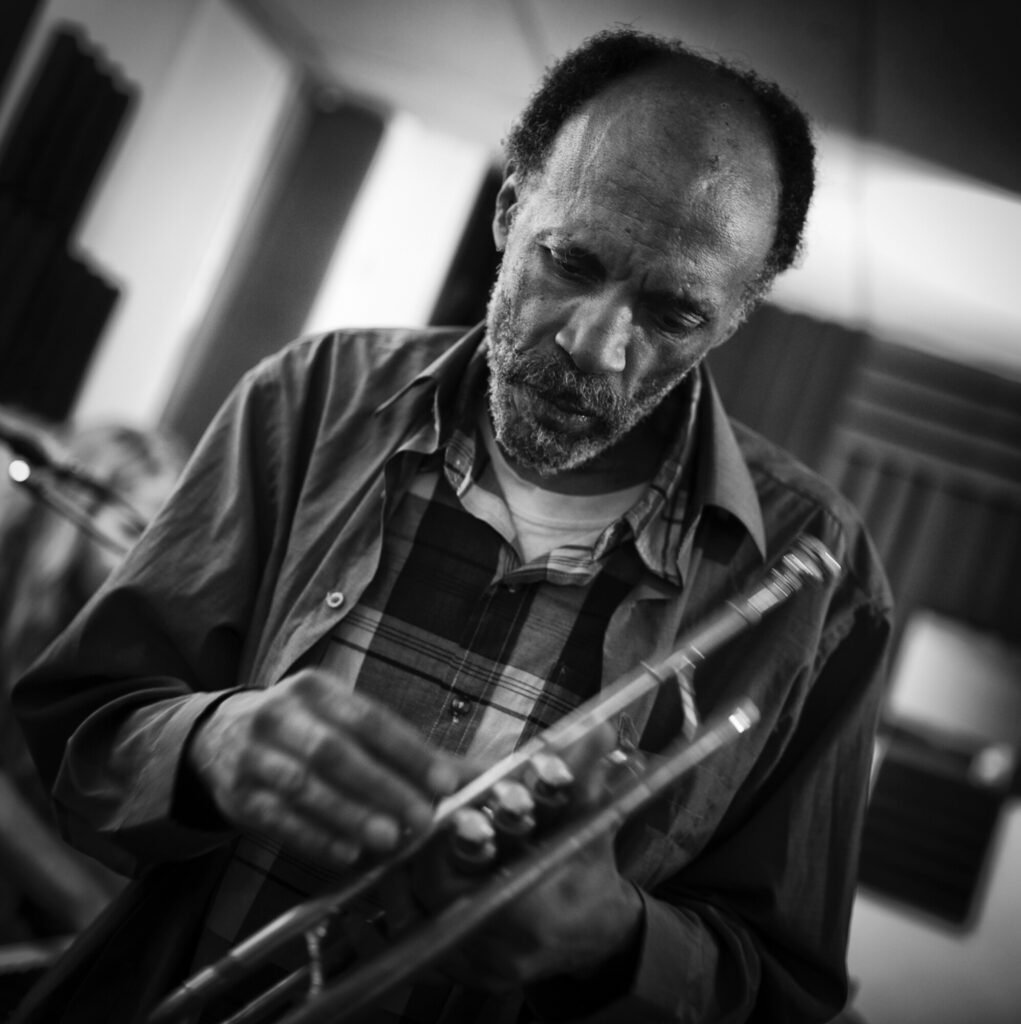
Is there anything else you’d like to share with Psychedelic Baby readers?
Daniel: Dissipated Face (I dig their serious dedication) now reignites and re-inspires me to keep on keepin’ on toward that synthesis. This is just the tip of the iceberg.
Bruce: The new version of Dissipated Face with original members Popkin & Ralske, and Daniel Carter, plus Bob Musso & Will Dahl, will take place at Downtown Music Gallery on February 23rd, 2014. Dissipated Face were amazing in their day and were fearless in exploring the better parts of free music. Long live Dissipated Face and Daniel Carter. After all these years, they still sound great!
Robert “Bob”: It’s great to see this Dissipated Face album getting released. It’s a great document from a great time with great people!
Stephen: We want to play some concerts or festivals with John Zorn and Bill Laswell’s Bladerunner, with Fred Frith, Masada, Medeski, Martin and Wood, Machine Gun, some of Joe Russo and Dave Dreiwitz’s projects, and other like-minded bands.
Klemen Breznikar
Dissipated Face Facebook
Roaratorio Website / Instagram
DISSIDENT ARTS: DISSIDENT ARTS FESTIVAL AUG 15 AND 16 2015!
THIS JUST IN….The 2015 Dissident Arts Festival will occur over the weekend of AUG 15-16: Two Nites/Two Sites! Join us on Sat Aug 15 at the new location of El Taller Latino Americano AND at Brooklyn’s hip new music club Shapeshifter Lab on Sun Aug 16.
Dissipated Face will be the headliner on Sunday 8/16 (last year’s headliner was Will Connell/Vincent Chancey’s quartet and the year prior it was Roy Campbell, among the past performers and speakers were celebrated actor/raconteur Malachy McCourt, folk legend Pete Seeger, and tributes to Woody Guthrie, Paul Robeson, and Phil Ochs
ShapeShifter Lab (18 Whiteell Place Between 1st and Carroll Str, off 4th Ave in Park Slope)
‘Rock Is Dead Shithead‘ from the EP, directed by Kurt Ralske.
